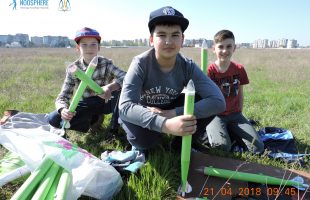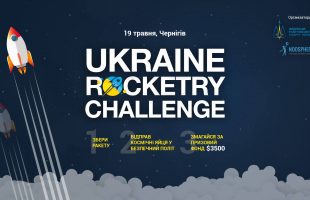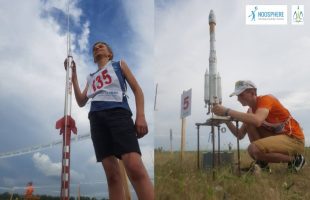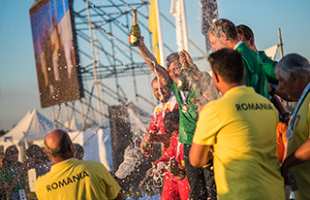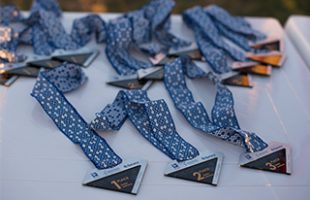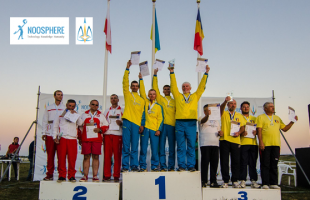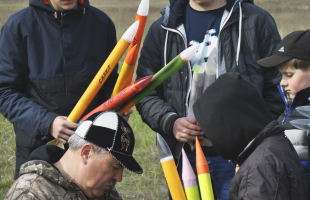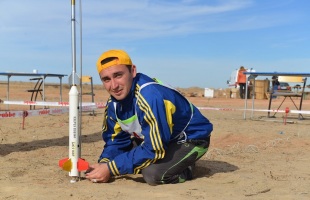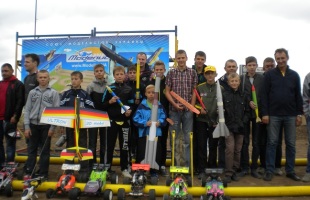FIRE 2019 or match encounter Ukraine-USA: Ukrainian team diary

“Spacemodelling competitions not only hum with charged competition, but also bring inventors and designers the opportunity to demonstrate their skill.”
Space has increasingly piqued public interest for some time, so it is no surprise that the sport of spacemodelling also rose in popularity. At the same time, however, classes within the sport – models and competitions – which previously enticed are now lost to today’s aficionado.
Executives with Aeromodelling Commission of the World Air Sports Federation (CIAM FAI) have been reviewing inclusion of the sport of spacemodelling in the World Aviation Games. Presently, there are discussions on which classes of models might be of interest to the general public.
Given the current trends and needs of the industry, a new international competition Firefly International Rocket Event (FIRE) was created. This was a joint effort between NGO “Association Noosphere”, private aerospace company Firefly Aerospace, the National Rocketry Association (USA) and the Spacemodelling Sport Federation of Ukraine. FIRE followed a match format between teams from Ukraine and the USA.
Specifics of the match included classes of FAI models which were previously absent from the international competition stage (S6A/P, S12A/P). The athletes also had the familiar challenge of known crowd favorites (S2/P, S7, S8E/P). The competition mandated that competitors used engines from the same manufacturer, which was another first for competitive spacemodelling, as well as having impulse reduced to 1.25 H*s. This is the so-called “one-box” principle.
Since autumn 2018, organizers have been discussing the rules and conditions for FIRE. They understood that this was a new form of competition, so new classes and rule changes needed approval and implementation. Once the regulations were sorted and decided, athletes only had 2 months to prepare. This required rigorous timing and planning on their part!
By the time departure came, the team was not without hurdles. Unfortunately, the team from Ukraine could not take part in a full-fledged composition, as some were unable to secure visas. The team twice tried to overcome the legislative defeat to no avail. Given the bureaucratic snag, the team had to drastically alter its plans the day before departure.
On March 5, the Ukrainian team consisting of Michael Ryabokon, Denis Khmil, Olga Khmil, Alexander Radchenko, Sergey Serdyukov and Valery Bidovsky finally flew off to conquer the Texas sky. The FIRE competition was held in Texas March 7-9.
The official training day, March 7, saw the first rockets launch into the sky of Texas. It was a rough day. The team got acquainted with the airfield, snakes, spiders, hares, strong wind and American model rocket engines (MRE). MRE differ from the engines that the Ukrainian team uses, and it took a while to adapt.

March 8 was the first day of competition, and began with a class of models S12A/P. This is the “triathlon” where models compete for the duration of the flight. The intention of the competition is to demonstrate the universality of the model, as well as the ability of the rocket-maker to create and launch a rocket that can sustain flight for as long as possible. While in flight, the rocket is to exhibit three different rescue systems in three different rounds: 1) autorotation; 2) streamer; and 3) the parachute. The athlete must use only one model, the body and nose of which cannot be replaced. Since rockets of this class should stay in the air for as long as possible, the challenge is to create the lightest and most durable body. Models generally are crafted from parchment or fiberglass. The team from Ukraine went head to head with the US team for the first two rounds, but were toppled on the third round to be excluded from the fight for first place.
By afternoon, the Ukrainian team caught up with the Americans in the team event, thanks to gains in the S6A/P model class. This is a class of rocket model designed for the duration of descent, with a rescue system in the form of a brake band. The task of the rocket engineer is to calculate as accurately as possible within the framework of a designated flight time of 240 seconds and launch the model within 5 minutes of working time. The important thing is that the athlete has only 2 attempts to start the course. FIRE is the first international competition to include the S6A/P class.
The battle between the teams persisted all the way to the final, where 2 delegates from each team presented. Adapting to the new conditions, the Ukrainians displayed the best result to take the top of the podium. Valery Bidovsky from Kherson earned champion in the S6A/P class. Sergey Serdyukov from Mariupol snagged silver. The Ukrainian team took first place in this class.
Day two saw things heat up with even more intensity. On the morning of March 9, the competition opened with the S2/P class. Spacemodelling Sport Federation of Ukraine considers this class a key to promote the sport not only in our country but throughout the world. This class is no easy feat; the model rockets are tested on flight altitude, while carrying a raw chicken egg as a payload. The payload may use more than one parachute to coax it to ground, but it must touch down with the egg in tact. S2 class rockets cannot have more than one stage and in-flight must maintain all records. The athlete must run the model to a height of 300 meters and put it down in 60 seconds. If the cargo is damaged, the athlete is disqualified from competitions in this class. It is essential to maintain a balance between speed and safety! This class is a challenge to novice and experienced fliers alike. As the requirements are heavy in the natural sciences, technology, technical creativity and mathematics, the S2/P class can be used to enhance a STEM education model and strengthen interest in aerospace.
After two rounds, five athletes had almost identical results, which led to some tense moments. Once all team members returned from the competition field, altimeter data was evaluated. The final results were: Olga Khmil (Kyiv) in second place; and Sergey Serdyukov (Mariupol) took third. The Ukrainian team did not quite gather enough points to capture first place.
Noon saw a visit to the test site by local Texas government, members of the State House of Representatives, and about 30 students from local schools. The children came to get a taste for spacemodelling sport and participate in junior competitions. Such events are part of the STEM education model in the USA.
While at the field, the firing of the actual engine of Alpha, a new launch vehicle manufactured by Firefly Aerospace, was a treat for all the participants and spectators. It is difficult to describe the impact of a real rocket engine firing only 150 meters away.

Due to the visa snafu, Ukraine did not have enough athletes to compete in S8E/P class – guided models of rocket gliders for the duration of the flight and the accuracy of landing. It is one of the most diverse classes as far as construction and materials. The rocket glider should launch like a rocket, make a flight of a set time, then land in the center of a circle with a 10-meter diameter. The closer to the center the rocket glider lands, the more bonus points for the participant. Since there was no rivalry for this class, American athletes elected to run demonstration flights. The Ukrainians performed test flights on their radio-controlled gliders.
As far as complexity, challenge and entertainment, the S7 class, scale, takes the cake. The S7 class is a multistage replica of real rockets where, in addition to the visual and scale identity to the original ones, they are also assessed on how realistic the models duplicate the launch and flight. Despite the Ukraine’s top competitor in this class being unable to attend, the Ukraine team still had a strong showing with Alexander Radchenko from the city of Nyzhin grabbing third place.
The American team won in the overall standings, which included four classes of models: S6A/P, S12A/P, S2/P and S7. They won 6 gold, 3 silver and 2 bronze medals. The Ukraine team did not leave empty handed, as they took second team place and brought home 2 gold, 5 silver and 2 bronze awards.
Despite the competitive nature, the Firefly International Rocket Event was a genuine cooperative effort. 18 athletes from Ukraine and the United States all worked together to create a friendly atmosphere. This approach allowed us to share our own experience and learn from the experience of the Americans.
Although this was the first time for FIRE, it was so successful that “Association Noosphere” and Firefly Aerospace are already working to organize the next one in 2020 and even invite more countries to participate. The organizers even discussed the option of holding the 2022 World Spacemodelling Championships in Texas. The last time an event of this level was hosted in the United States was 27 years ago!















